Seamless Integration in Harsh Environments: The Robust End Launch Waveguide to Coaxial Adapter
In today's demanding RF and microwave applications, engineers face critical challenges when transitioning signals between different transmission media while maintaining signal integrity in extreme operating conditions. The End Launch Waveguide to Coaxial Adapter emerges as the definitive solution for these complex scenarios, offering unparalleled reliability in harsh environments where traditional components fail. These precision-engineered adapters bridge the gap between waveguide systems and coaxial transmission lines, ensuring seamless signal conversion with minimal loss across frequencies up to 110 GHz, making them indispensable for satellite communications, aerospace applications, and defense systems operating in extreme temperatures, high vibration environments, and corrosive conditions.
Understanding End Launch Waveguide to Coaxial Adapter Technology
Core Design Principles and Functionality
The End Launch Waveguide to Coaxial Adapter represents a sophisticated engineering achievement that addresses fundamental challenges in RF system design. Unlike traditional right-angle adapters, the end launch configuration provides a straight-through signal path that minimizes discontinuities and reduces reflection losses. This design philosophy is particularly crucial in high-frequency applications where even minor impedance variations can cause significant signal degradation. The adapter's internal structure features a precisely machined probe that extends into the waveguide cavity, creating an optimal coupling mechanism between the electromagnetic field patterns of the waveguide and the TEM mode of the coaxial line. The mechanical construction of these adapters incorporates robust materials such as brass, aluminum, or stainless steel, ensuring durability in challenging environments. The probe positioning is critical to achieving optimal VSWR performance, with manufacturing tolerances measured in micrometers to maintain consistent electrical characteristics. Advanced machining techniques and computer-aided design optimization enable these adapters to achieve exceptional performance across their entire operational bandwidth. The End Launch Waveguide to Coaxial Adapter design inherently provides better mechanical stability compared to alternative configurations, making it ideal for applications subject to vibration, thermal cycling, and mechanical stress.
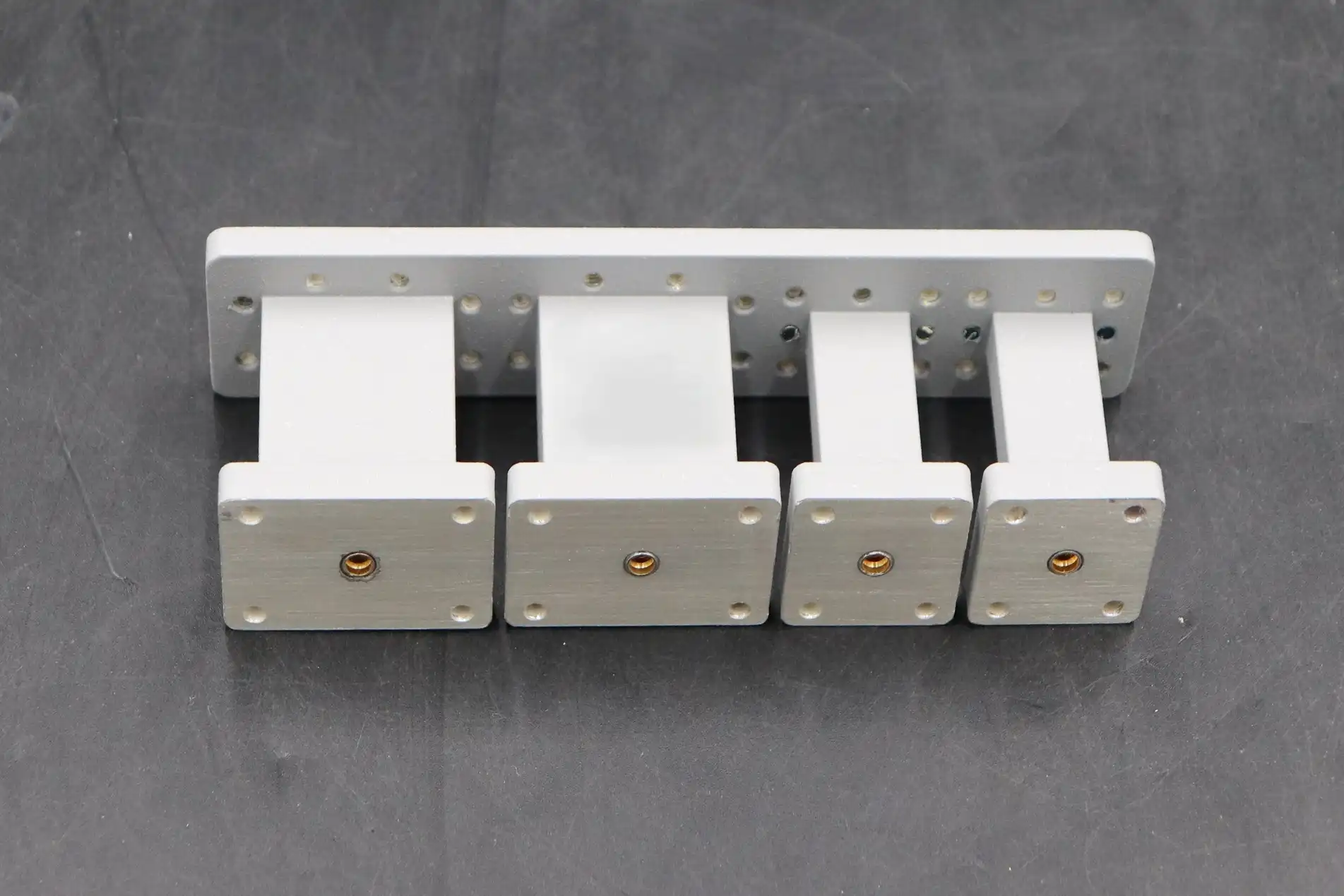
Frequency Response and Electrical Performance
Modern End Launch Waveguide to Coaxial Adapter designs excel across an extensive frequency spectrum, with capabilities extending from traditional microwave bands through millimeter-wave frequencies up to 110 GHz. This wide frequency coverage enables a single adapter design to serve multiple applications, reducing inventory complexity and system costs. The electrical performance characteristics include exceptionally low insertion loss, typically less than 0.2 dB across the operational bandwidth, and excellent VSWR performance often better than 1.3:1 throughout the specified frequency range. The power handling capability of these adapters varies with frequency and design, with typical ratings ranging from several watts at millimeter-wave frequencies to hundreds of watts in lower frequency bands. Thermal management becomes increasingly important at higher power levels, with advanced designs incorporating enhanced heat dissipation features. The End Launch Waveguide to Coaxial Adapter maintains its electrical performance across temperature extremes, with specifications typically covering -55°C to +125°C operational ranges. This temperature stability is achieved through careful material selection and thermal expansion compensation in the mechanical design.
Critical Applications in Harsh Environment Systems
Satellite Communication Systems
Satellite communication systems represent one of the most demanding applications for End Launch Waveguide to Coaxial Adapter technology. Ground station equipment must operate reliably in outdoor environments exposed to temperature extremes, moisture, UV radiation, and corrosive atmospheric conditions. The adapter's robust construction and sealed design prevent moisture ingress and corrosion, ensuring long-term reliability in these challenging conditions. Uplink transmitter applications require high power handling capability, while downlink receiver systems demand ultra-low noise figure preservation through the signal path. The frequency agility requirements of modern satellite systems necessitate broadband adapter designs that maintain consistent performance across multiple frequency bands. Ka-band and Q-band satellite systems particularly benefit from the End Launch Waveguide to Coaxial Adapter configuration due to its superior high-frequency performance. The mechanical stability of the end launch design proves crucial in tracking antenna systems where vibration and movement could compromise signal integrity in less robust adapter configurations. Advanced satellite systems operating in geostationary and low Earth orbit applications rely on these adapters to maintain communication links with minimal signal degradation.
Aerospace and Defense Applications
Military and aerospace applications subject End Launch Waveguide to Coaxial Adapter components to extreme environmental conditions including high altitude, temperature cycling, vibration, shock, and electromagnetic interference. Radar systems in aircraft and ground-based installations require adapters that maintain precise electrical characteristics despite mechanical stress and temperature variations. The inherent ruggedness of the end launch design provides superior performance compared to alternative configurations in these demanding applications. Electronic warfare systems and communications equipment in military platforms demand adapters with exceptional reliability and performance consistency. The End Launch Waveguide to Coaxial Adapter design offers enhanced resistance to mechanical failure modes that could compromise mission-critical systems. Naval applications present additional challenges including salt spray corrosion and high humidity environments, where the robust construction and appropriate material selection of these adapters ensure continued operation. Airborne radar and communication systems benefit from the compact design and lightweight construction of modern end launch adapters, contributing to overall system efficiency and reliability.
Industrial and Research Applications
Research laboratories and industrial test facilities require End Launch Waveguide to Coaxial Adapter components that deliver consistent, repeatable performance for accurate measurements. Automated test equipment systems depend on the mechanical repeatability and electrical stability of these adapters to ensure measurement accuracy across extended operational periods. The robust design minimizes connector wear and maintains electrical performance despite frequent connect and disconnect cycles typical in test environments. High-power industrial heating and processing applications utilize these adapters in systems where thermal stress and electromagnetic fields create challenging operating conditions. The End Launch Waveguide to Coaxial Adapter design provides reliable performance in these harsh industrial environments where component failure could result in significant downtime and economic losses. Research applications in radio astronomy and particle physics demand ultra-low noise figure and exceptional electrical stability, requirements that are met by precision-manufactured end launch adapters with carefully optimized designs.
Advanced Manufacturing and Quality Assurance
Precision Manufacturing Techniques
The production of high-performance End Launch Waveguide to Coaxial Adapter components requires advanced manufacturing capabilities and stringent quality control processes. Computer numerical control machining centers equipped with high-precision tooling achieve the tight dimensional tolerances required for optimal electrical performance. The probe positioning accuracy directly impacts VSWR and insertion loss performance, necessitating measurement and adjustment techniques with sub-micrometer precision. Material selection plays a crucial role in adapter performance and longevity. High-conductivity copper alloys provide optimal electrical performance, while corrosion-resistant platings ensure long-term reliability in harsh environments. The End Launch Waveguide to Coaxial Adapter assembly process incorporates specialized techniques for probe positioning and coaxial connector attachment that maintain mechanical and electrical integrity under operational stresses. Advanced soldering and brazing techniques create hermetic seals that prevent moisture ingress and maintain electrical performance in demanding environments.
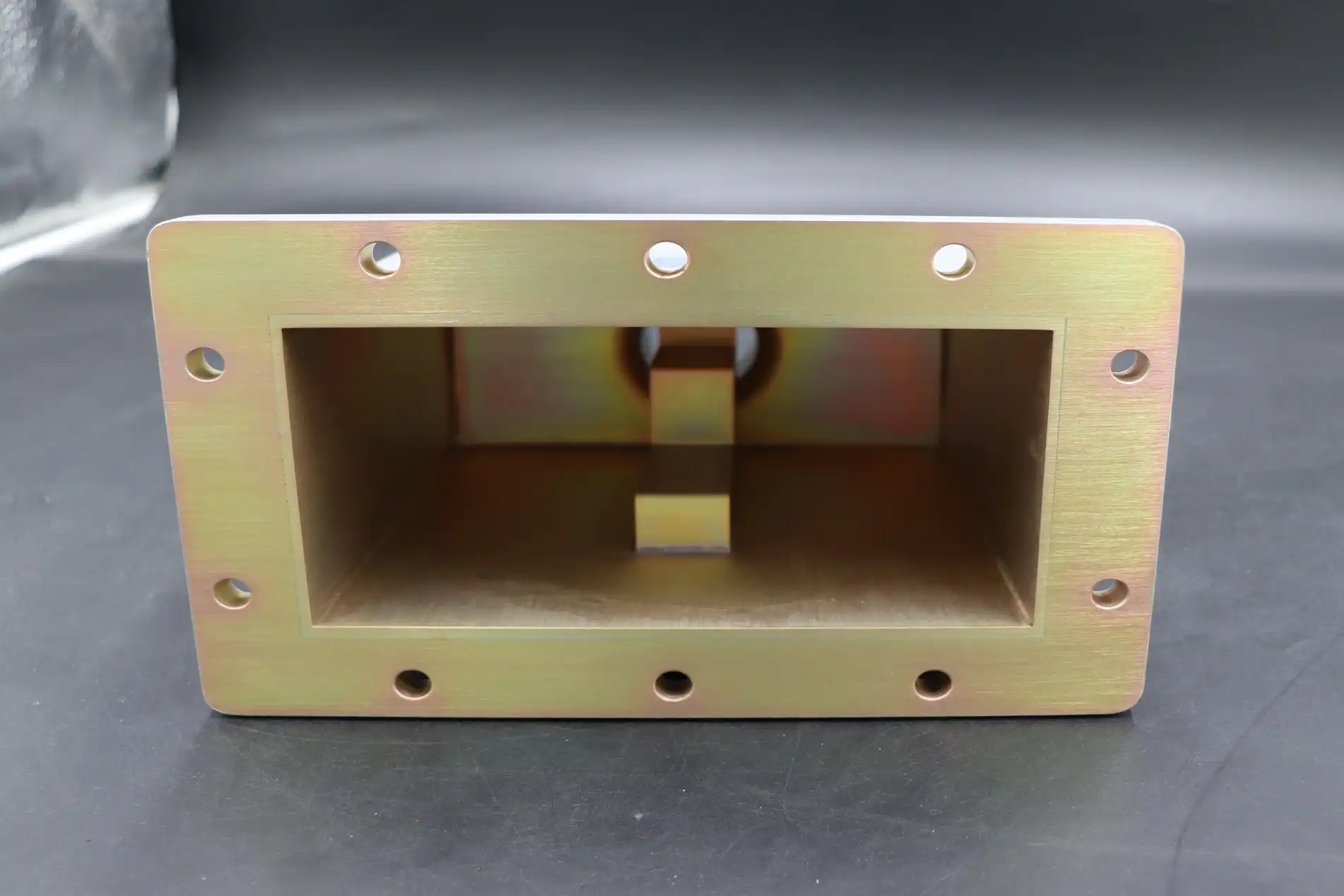
Testing and Validation Procedures
Comprehensive testing protocols ensure that each End Launch Waveguide to Coaxial Adapter meets stringent performance specifications. Network analyzer measurements verify electrical parameters including insertion loss, return loss, and phase characteristics across the operational frequency range. Environmental testing subjects adapters to temperature cycling, vibration, shock, and humidity exposure to validate performance under harsh operating conditions. Statistical process control methods monitor manufacturing consistency and identify potential quality issues before they impact product performance. The End Launch Waveguide to Coaxial Adapter testing protocol includes both electrical and mechanical validation, ensuring that components meet specification requirements and provide reliable long-term performance. Accelerated life testing procedures predict adapter longevity under various stress conditions, enabling appropriate warranty and service life specifications. Advanced measurement techniques utilizing precision instrumentation provide traceable calibration standards that ensure measurement accuracy and repeatability.
Conclusion
The End Launch Waveguide to Coaxial Adapter stands as a critical enabling technology for modern RF and microwave systems operating in harsh environments. Its robust design, superior electrical performance, and proven reliability make it indispensable for demanding applications across satellite communications, aerospace, defense, and industrial sectors where failure is not an option.
Cooperate with Advanced Microwave Technologies Co., Ltd.
Advanced Microwave Technologies Co., Ltd. leverages over 20 years of specialized experience in microwave component manufacturing, offering comprehensive End Launch Waveguide to Coaxial Adapter solutions backed by ISO 9001:2015 certification and RoHS compliance. Our state-of-the-art 24m Microwave Darkroom facility enables precise testing across the complete 0.5-110GHz frequency range, ensuring every adapter meets stringent performance specifications. As a leading China End Launch Waveguide to Coaxial Adapter manufacturer, we provide High Quality End Launch Waveguide to Coaxial Adapter solutions with competitive End Launch Waveguide to Coaxial Adapter price structures. Whether you require standard configurations or customized designs, our China End Launch Waveguide to Coaxial Adapter supplier capabilities include rapid prototyping, comprehensive technical support, and flexible production volumes. Contact our experienced engineering team at craig@admicrowave.com to discuss your specific requirements and discover why global customers choose us as their trusted China End Launch Waveguide to Coaxial Adapter factory for End Launch Waveguide to Coaxial Adapter for sale with guaranteed China End Launch Waveguide to Coaxial Adapter wholesale pricing and exceptional after-sales support.
FAQ
Q: What frequency ranges do End Launch Waveguide to Coaxial Adapters typically cover?
A: End Launch Waveguide to Coaxial Adapters typically cover frequency ranges from 500 MHz to 110 GHz, with specific bandwidth depending on the waveguide size and coaxial connector type selected for the application.
Q: How do End Launch Waveguide to Coaxial Adapters perform in harsh environmental conditions?
A: These adapters are designed with robust materials and sealed construction to withstand extreme temperatures (-55°C to +125°C), high vibration, corrosive environments, and mechanical stress while maintaining electrical performance specifications.
Q: What are the typical VSWR and insertion loss specifications for these adapters?
A: High-quality End Launch Waveguide to Coaxial Adapters typically achieve VSWR better than 1.3:1 and insertion loss less than 0.2 dB across their operational bandwidth, with specific performance varying by frequency range and design.
Q: Can End Launch Waveguide to Coaxial Adapters be customized for specific applications?
A: Yes, these adapters can be customized for waveguide size, flange type, coaxial connector configuration, frequency range, and mechanical requirements to meet specific system integration needs and environmental conditions.
References
1. Pozar, David M. "Microwave Engineering Fourth Edition." John Wiley & Sons, 2012.
2. Balanis, Constantine A. "Advanced Engineering Electromagnetics Second Edition." John Wiley & Sons, 2012.
3. Collin, Robert E. "Foundations for Microwave Engineering Second Edition." IEEE Press, 2001.
4. Chen, Zhi Ning and Chia, Michael Y. W. "Broadband Planar Antennas: Design and Applications." John Wiley & Sons, 2006.
YOU MAY LIKE
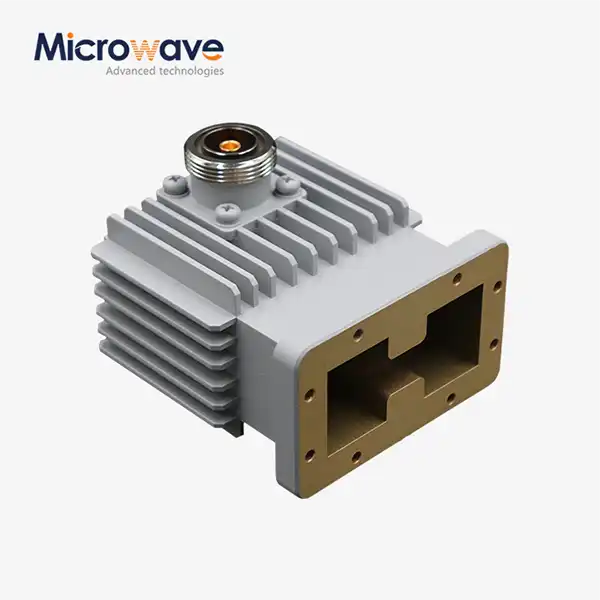 VIEW MOREHigh Power Waveguide to Coaxial Adapter
VIEW MOREHigh Power Waveguide to Coaxial Adapter VIEW MORERight Angle Double Ridged WG To Coaxial Adapter
VIEW MORERight Angle Double Ridged WG To Coaxial Adapter VIEW MORERight Angle Waveguide to Microstrip Adapter
VIEW MORERight Angle Waveguide to Microstrip Adapter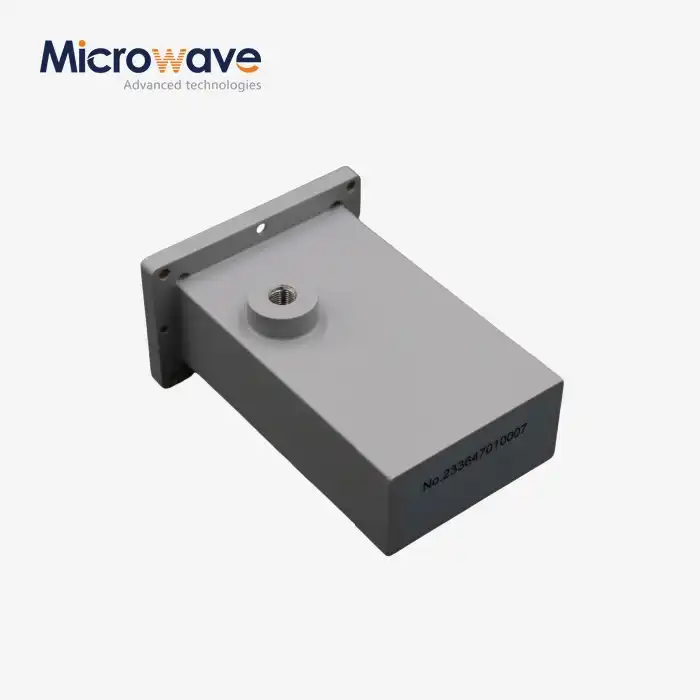 VIEW MOREWG Termination
VIEW MOREWG Termination VIEW MOREDouble Ridge Waveguide Termination
VIEW MOREDouble Ridge Waveguide Termination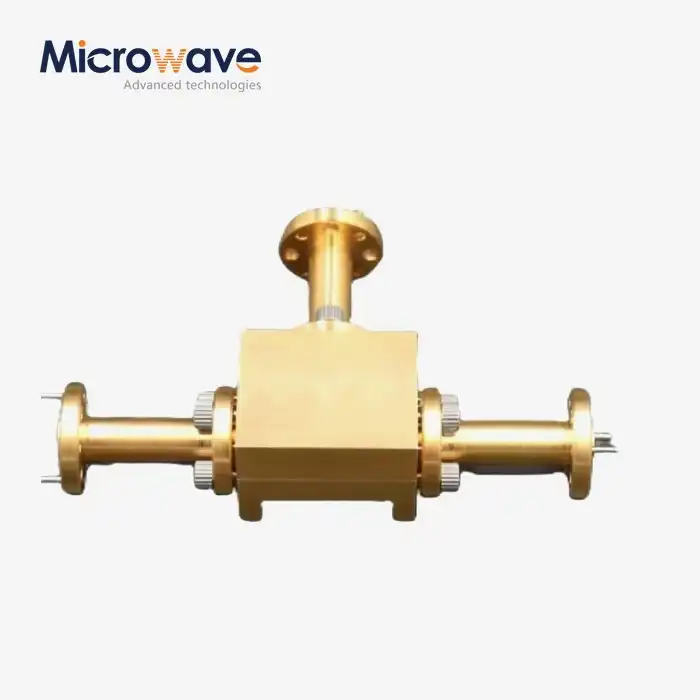 VIEW MOREWaveguide Power Divider
VIEW MOREWaveguide Power Divider VIEW MOREE-Plane Tee
VIEW MOREE-Plane Tee VIEW MORECrossguide Directional Coupler
VIEW MORECrossguide Directional Coupler




